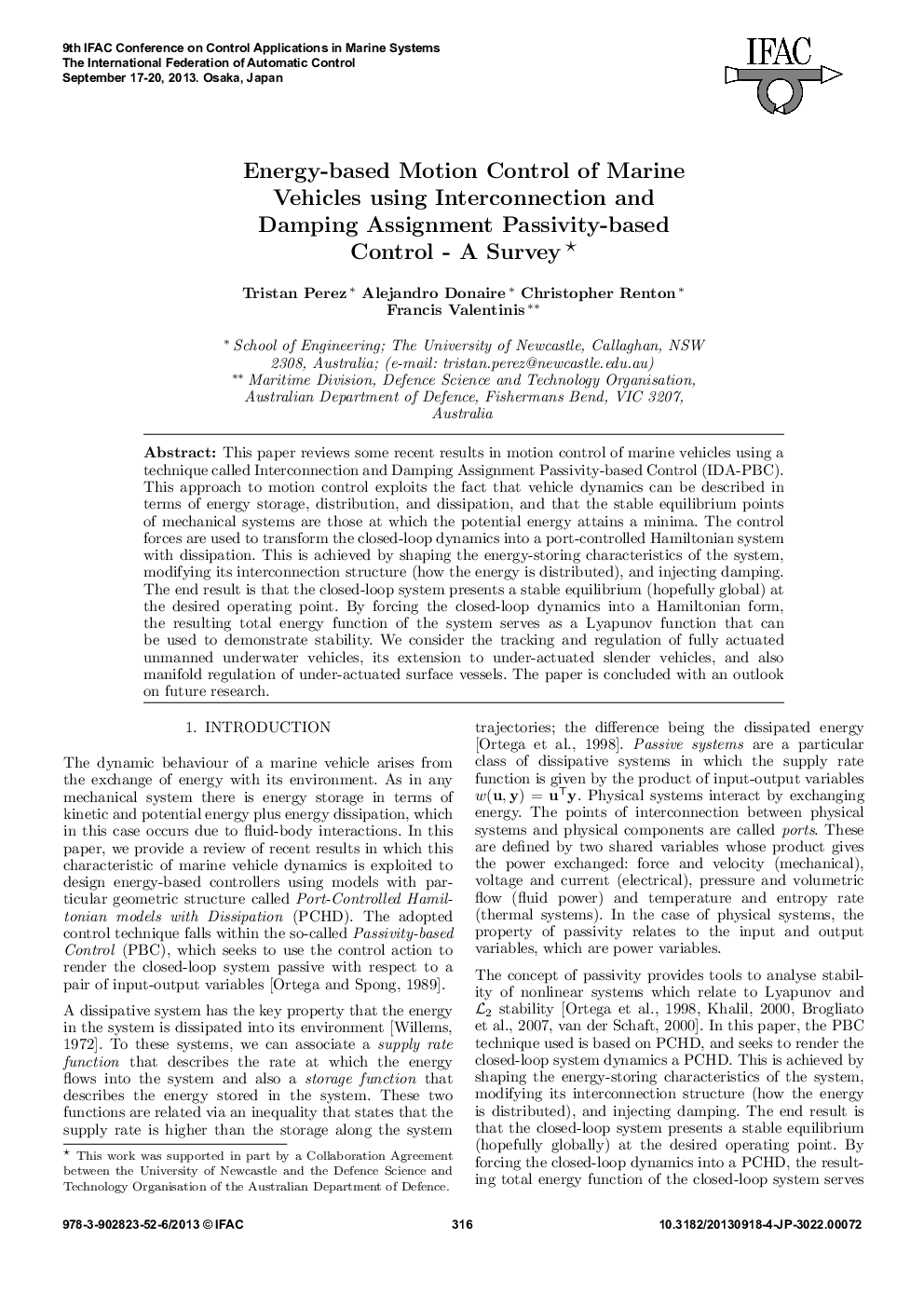| Article ID | Journal | Published Year | Pages | File Type |
|---|---|---|---|---|
| 715796 | IFAC Proceedings Volumes | 2013 | 12 Pages |
This paper reviews some recent results in motion control of marine vehicles using a technique called Interconnection and Damping Assignment Passivity-based Control (IDA-PBC). This approach to motion control exploits the fact that vehicle dynamics can be described in terms of energy storage, distribution, and dissipation, and that the stable equilibrium points of mechanical systems are those at which the potential energy attains a minima. The control forces are used to transform the closed-loop dynamics into a port-controlled Hamiltonian system with dissipation. This is achieved by shaping the energy-storing characteristics of the system, modifying its interconnection structure (how the energy is distributed), and injecting damping. The end result is that the closed-loop system presents a stable equilibrium (hopefully global) at the desired operating point. By forcing the closed-loop dynamics into a Hamiltonian form, the resulting total energy function of the system serves as a Lyapunov function that can be used to demonstrate stability. We consider the tracking and regulation of fully actuated unmanned underwater vehicles, its extension to under-actuated slender vehicles, and also manifold regulation of under-actuated surface vessels. The paper is concluded with an outlook on future research.
